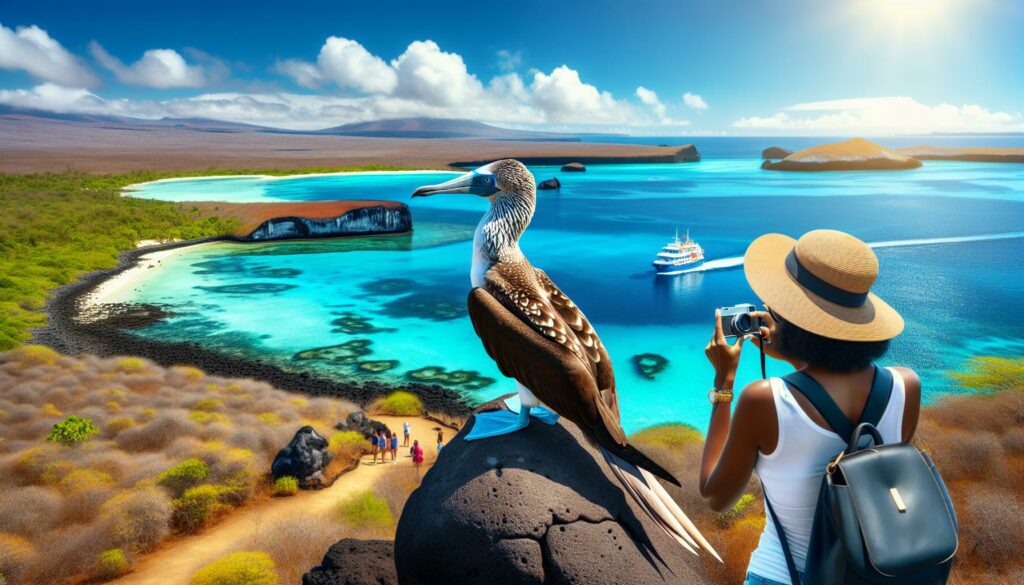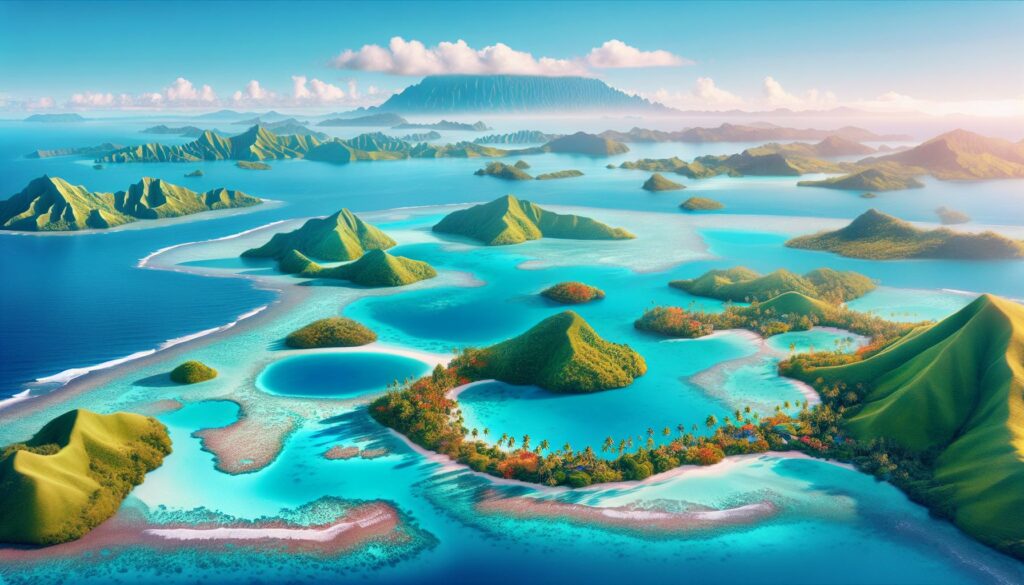Planning my first trip to the Galápagos Islands was both exciting and challenging. As a wildlife enthusiast and avid traveler, I’ve discovered that timing is everything when visiting this incredible archipelago off Ecuador’s coast.
Best time to visit the galapagos islands unique experiences throughout the year but selecting the perfect time for your visit can make a significant difference in what you’ll see and experience. After multiple visits during different seasons I’ve learned that each month brings its own distinct wildlife encounters weather patterns and visitor experiences. Whether you’re dreaming of swimming with sea lions watching blue-footed boobies perform their mating dance or witnessing giant tortoises in their natural habitat choosing the right time to visit will ensure you don’t miss these incredible moments.
Key Takeaways
- The Galápagos Islands have two main seasons: wet (December-May) with warmer temperatures and brief showers, and dry (June-November) with cooler temperatures and nutrient-rich waters.
- Peak tourist months include mid-June to early September, mid-December to mid-January, and March to April, requiring 6-8 months advance booking and commanding 25-40% higher rates.
- Low season (September-November, January-March) offers significant advantages including reduced rates (15-30% lower), smaller tour groups, and better accommodation availability.
- Water temperatures vary significantly between seasons: 75°F (24°C) during wet season with excellent visibility, dropping to 68°F (20°C) during dry season.
- Each month presents unique wildlife viewing opportunities, from sea turtle nesting (December-May) to whale shark sightings (April-November) and various bird mating seasons.
- Budget-conscious travelers should consider low season visits for savings on tours (20-25% lower), accommodations, and flights, with only 1-2 months advance booking needed.
Best Time to Visit the Galapagos Islands
The Galapagos Islands experience two distinct seasons that shape wildlife behavior travel experiences. Each season brings unique conditions impacting marine life visibility ocean temperatures air conditions.
Wet Season (December to May)
The wet season creates a tropical atmosphere with warm temperatures ranging from 80°F to 90°F (27°C to 32°C). Daily brief showers occur primarily in the afternoon leaving mornings clear for activities. Ocean temperatures reach 75°F to 80°F (24°C to 27°C) providing excellent conditions for:
- Snorkeling in crystal-clear waters with high underwater visibility
- Swimming with sea turtles nesting on beaches
- Observing land birds during mating season
- Photographing lush green landscapes flowers in bloom
- Watching flamingos wade through brackish lagoons
| Wet Season Metrics | Average Values |
|---|---|
| Air Temperature | 80-90°F |
| Water Temperature | 75-80°F |
| Rainfall | 3-4 inches/month |
| Humidity | 80-85% |
- Watching penguins blue-footed boobies feed in nutrient-rich waters
- Spotting whale sharks in the northwestern islands
- Hiking volcanic trails with minimal precipitation
- Observing sea lions during breeding season
- Photographing marine iguanas clustered for warmth
| Dry Season Metrics | Average Values |
|---|---|
| Air Temperature | 70-80°F |
| Water Temperature | 65-72°F |
| Rainfall | 0.5-1 inch/month |
| Humidity | 60-75% |
Peak Tourist Months in the Galapagos
The Galapagos Islands experience distinct tourist patterns throughout the year, with specific months drawing larger crowds due to optimal wildlife viewing conditions and favorable weather patterns.
High Season Travel Periods
Peak tourism in the Galapagos occurs during three main periods:
- Mid-June through early September, coinciding with North American summer vacations
- Mid-December through mid-January, during the winter holiday season
- March through April, aligning with Spring Break travel
During these periods, I’ve observed:
| Category | Peak Season Impact |
|---|---|
| Hotel Rates | 25-40% higher |
| Flight Availability | 85-90% full |
| Tour Capacity | 90-95% booked |
| Advance Booking Required | 6-8 months |
Low Season Benefits
The low season (September-November January-March) offers distinct advantages:
- Reduced rates on accommodations (15-30% lower than peak pricing)
- Enhanced flexibility in booking preferred tours
- Smaller group sizes on guided excursions (4-8 people vs 10-16)
- Immediate availability at top-rated hotels
- Less crowded viewing spots at popular wildlife locations
| Category | Savings/Benefit |
|---|---|
| Tour Costs | 20-25% lower |
| Flight Options | 40-50% more availability |
| Advance Booking | 2-3 months sufficient |
| Group Sizes | 50% smaller |
Wildlife Viewing Calendar
The Galápagos Islands offer distinctive wildlife encounters throughout the year. Here’s my month-by-month guide to experiencing the archipelago’s most remarkable marine and bird species.
Marine Life Highlights
- December-May: Green sea turtles lay eggs on beaches across multiple islands
- January-March: Marine iguanas display vibrant breeding colors on Española Island
- February-April: Flamingos nest in the lagoons of Floreana Island
- April-November: Whale sharks frequent the waters around Darwin & Wolf Islands
- June-September: Humpback whales migrate through the archipelago
- July-November: Sea lions breed & nurse pups on San Cristóbal & Española
- August-October: Galápagos penguins mate & nest on Isabela Island
- January-March: Great frigatebirds display inflated red pouches on North Seymour
- February-May: Nazca boobies perform courtship rituals on Genovesa Island
- March-July: Waved albatrosses nest on Española Island
- April-June: Blue-footed boobies engage in mating dances across multiple islands
- June-August: Flightless cormorants nest on Fernandina Island
- July-September: Galápagos hawks breed on Santiago & Santa Cruz Islands
- September-November: Red-footed boobies nest in colonies on Genovesa Island
- November-January: Darwin’s finches display peak breeding activity on all islands
| Month | Unique Wildlife Events |
|---|---|
| January | Marine iguana breeding colors peak |
| March | Waved albatross arrival |
| June | Giant tortoise migration begins |
| August | Sea lion pupping season peaks |
| October | Blue-footed booby chicks hatch |
| December | Giant tortoise eggs begin hatching |
Weather Patterns and Ocean Conditions
The Galápagos Islands experience distinct weather patterns that directly impact visitor experiences throughout the year. These conditions create unique opportunities for wildlife viewing across different seasons.
Water Temperature Changes
Water temperatures in the Galápagos fluctuate significantly based on seasonal currents. From December to May, surface temperatures average 75°F (24°C) with visibility reaching 30-70 feet. During the dry season (June-November), temperatures drop to 68°F (20°C) as the Humboldt Current brings cooler waters, creating prime conditions for diverse marine life activities.
| Season | Water Temperature | Visibility |
|---|---|---|
| Wet (Dec-May) | 75°F (24°C) | 30-70 feet |
| Dry (Jun-Nov) | 68°F (20°C) | 15-40 feet |
Rainfall and Humidity Levels
The archipelago’s precipitation patterns vary dramatically between seasons. The wet season brings 3-4 inches of monthly rainfall with 85-90% humidity levels. Afternoon showers last 1-2 hours followed by sunshine. During the dry season, rainfall decreases to 0.5-1 inch monthly with 65-75% humidity, characterized by morning mists called “”garúa”” that dissipate by midday.
| Season | Monthly Rainfall | Humidity |
|---|---|---|
| Wet (Dec-May) | 3-4 inches | 85-90% |
| Dry (Jun-Nov) | 0.5-1 inch | 65-75% |
Month-by-Month Travel Guide
Each month in the Galápagos Islands presents distinct opportunities for wildlife encounters and activities. I’ve observed how different seasons create optimal conditions for specific adventures.
Best Months for Swimming and Snorkeling
The warm season from January through May delivers peak swimming and snorkeling conditions. Water temperatures reach 75-80°F (24-27°C), with visibility extending up to 30-70 feet. Marine life encounters include:
- January: Green sea turtles begin nesting activities
- February: Penguins congregate at Isabela Island
- March: Schools of hammerhead sharks near Darwin Island
- April: First whale shark sightings at Wolf Island
- May: Sea lion pups learn to swim in protected coves
- June-August: Clear skies with temperatures 68-75°F (20-24°C)
- September: Minimal rainfall with firm trail conditions
- October: Active giant tortoise breeding season
- November: Blue-footed booby courtship displays
- December: Marine iguana nesting on black sand beaches
| Month | Average Temperature | Trail Conditions | Wildlife Activity |
|---|---|---|---|
| Jun-Aug | 72°F (22°C) | Dry & stable | High |
| Sep-Nov | 75°F (24°C) | Firm & clear | Peak |
| Dec | 77°F (25°C) | Variable | Moderate |
Budget and Travel Considerations
Planning a Galápagos Islands trip requires careful consideration of seasonal cost variations, accommodation options and booking strategies. Here’s what I’ve learned about managing expenses and securing the best travel arrangements.
Cost Variations by Season
Peak season prices in the Galápagos reflect higher demand during key travel periods:
| Season | Price Increase | Flight Occupancy | Booking Window |
|---|---|---|---|
| Peak (Jun-Sep, Dec-Jan) | 25-40% higher | 85-90% full | 6-8 months ahead |
| Shoulder (Mar-May) | 10-20% higher | 70-80% full | 3-4 months ahead |
| Low (Sep-Nov, Jan-Mar) | 15-30% lower | 50-70% full | 1-2 months ahead |
Off-season travel offers significant savings on:
- Tour packages ($200-400 less per person)
- Cruise accommodations ($150-300 less per night)
- Domestic flights ($50-100 reduction each way)
- Guide services (15-25% discount)
Accommodation Availability
Hotel availability varies significantly throughout the year:
Low Season Benefits:
- Immediate booking at top-rated properties
- Enhanced room selection options
- Flexible check-in/check-out times
- Complimentary room upgrades
Peak Season Limitations:
- 90% occupancy rates at popular hotels
- Limited availability for ocean-view rooms
- Strict cancellation policies
- Required deposits (30-50% of total stay)
- Luxury eco-lodges ($500-800 per night)
- Boutique hotels ($200-400 per night)
- Guest houses ($80-150 per night)
- Camping sites ($25-50 per night)
Perfect Time
After exploring the intricacies of timing a best time to visit the galapagos islands visit I can confidently say there’s no single “”perfect”” time to visit. Each season brings its own natural wonders and unique wildlife encounters.
I recommend choosing your travel dates based on your specific interests whether that’s swimming with sea turtles snorkeling in warmer waters or watching blue-footed boobies perform their mating dance. Don’t forget to factor in your budget and tolerance for crowds when making your decision.
The magic of the Galápagos awaits year-round. I’ve found that thorough planning around seasonal highlights will ensure you experience the archipelago’s natural wonders at their finest.



